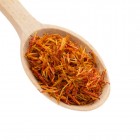Truly Deeply Madly
The Buzz on Cognac and Armagnac: I’ll Drink to That Smooth Talkers
December, 2015
Cognac and Armagnac are kindred spirits but, make no mistake, these fine French brandies are not created equal. These brothers from other mothers (er, barrels) are both distilled from white wine but come from different regions of southwest France. Different distillation and maturation processes also add to each spirit’s unique character. Here’s what you need to know to buy, store, serve and drink these beautiful, but distinctly different, brandies.
Cognac 101
Distilled twice and aged in Limousin oak barrels, cognac is light and aromatic with gentle pear, orange and floral notes.
Buying—The older the cognac the better it is, and the label says it all. VS (Very Special) means the cognac is aged at least two years, VSOP (Very Superior Old Pale) is aged four years and XO (Extra Old) is aged six years or more. Cognacs are usually blended vintages; the label represents the youngest vintage in the blend.
Storing—Cognac doesn’t age once it’s removed from its cask, so there’s no advantage to waiting to open a bottle. Oxygen won’t spoil cognac (an opened bottle will keep for years), but the cork will. So store the bottle standing up (not on its side). Keep at a cool, consistent temperature.
Serving—Use one of two types of cognac glasses: the tulip glass (long-stemmed with a wide bell that curves inward and flares slightly at the rim) and the balloon snifter (short-stemmed with a wide bell that narrows at the rim). Modest pours are best; fill the glass about 1/4 full.
Drinking—Drink younger cognacs chilled and older cognacs at room temperature. VS cognacs are often drunk long (over ice in a tall glass with mix), VSOPs are often mixed or drunk neat (chilled, no ice) and XOs are to be enjoyed as they are (the aging process has brought out their flavours and aromas).
Armagnac 101
Distilled once and aged in Monlezun black oak barrels, Armagnac is full and robust with complex fruit, vanilla and toffee notes and earthy, smoky characteristics.
Buying—Like cognac, Armagnac improves with age, and it’s generally categorized the same way. Single vintages of Armagnac are available, but most are blends. Typically Armagnac blends contain a higher percentage of older vintages than comparable cognacs, which is why many consider Armagnac a better value than cognac.
Storing—Like cognac, Armagnac stops aging once it’s in the bottle. It should also be stored upright and kept cool.
Serving—Armagnac is best served in a small, tapered glass. Choose a thin glass over a thick one; the warmth from your hand will heat the Armagnac, releasing new aromas and changing its flavour. Pour about two ounces at a time.
Drinking—Hold the glass at its base to gently warm the liquid. Sip slowly to experience its full complexity. Armagnac can also be enjoyed on ice or as a base for a cocktail, but choose a young Armagnac for cocktails. t8n
Did You Know? Tasting brandy is similar to tasting wine: consider its colour, nose, palate and finish. Swirl the brandy in your glass at eye level. Inhale the notes from about chest level first so it doesn’t overpower your senses; slowly bring it to your nose and inhale again. Take a small sip, and roll it over your palate.
Cognac is better known worldwide than Armagnac even though Armagnac has been around about 150 years longer. Why? Well, not because people preferred cognac to Armagnac; the Cognac region was simply in closer proximity to France’s trade routes (the Garonne and Charente rivers) in the 1600s, making it more accessible to other countries.












